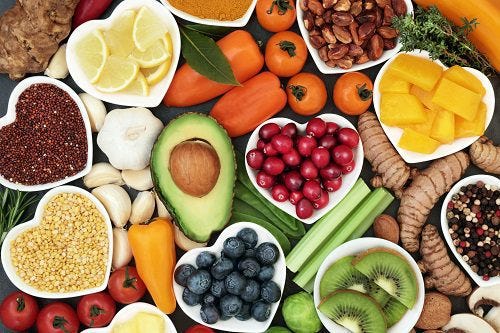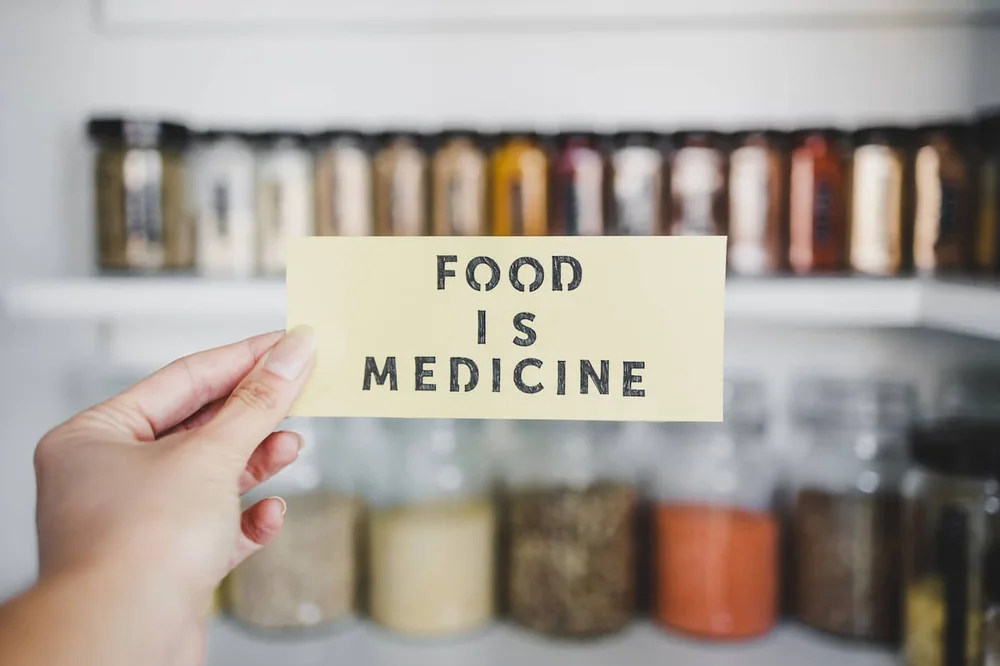Good vs. Bad Carbs: How to Create a Balanced Diet with Healthy Carbs!
When it comes to healthy eating, carbohydrates (carbs) have been deemed good, bad, and everything in between. Many weight management programs demonize carbs as the main culprit in weight gain. But is there more nuance to the matter?
In this article, we’ll separate truth from fiction about what carbs are, why we need to eat them, and how to incorporate them into our diet in a way that promotes health. We’ll also look at the importance of carbohydrates as part of a healthy diet and list some meal ideas for getting started eating carbs the nutritious way.
What Are Carbohydrates?
Carbohydrates are one of four major types of nutrients that our body needs to function. They break down into glucose, the body’s primary energy source, and are necessary for the proper function of every part of the body.
Carbs are found in:
- Fruits
- Grains
- Milk and milk products
- Starchy vegetables like corn and potatoes
- Beans and legumes
- Beverages like soda, juice, and alcohol
Not all carbs are created equal. Some sources are nutritious, while others are empty calories.
Good vs. Bad Carbs

Simple Carbs
Simple carbs break down easily and quickly in the body. Foods made primarily of simple carbs may have added sugars or be overly processed. This means some naturally occurring nutrients (like fiber) are stripped away.
Fast digestion also means they enter the bloodstream quickly. This can cause a rapid spike in blood sugar compared to complex carbs, especially when eaten without protein or fats. For example, a can of soda provides your body with carbohydrates but doesn’t hold any nutritional value because it’s missing vitamins, minerals, fiber, or other nutrients.
Other examples of simple carbs include:
- Cake, cookies, pies, donuts
- Sugar-sweetened beverages and energy drinks
- White rice
There’s a time and a place for enjoying foods that hold little nutritional value such as celebrations, holidays, and special occasions. The key is to focus on moderation and not obsess over whether or not every food choice you make is good or bad. Instead, to promote a healthy relationship with food, plan on making the majority of your diet nutrient-dense foods from fruits, vegetables, whole grains, and lean proteins.
Complex Carbs
Complex carbs take longer to digest. They don’t cause as dramatic a spike in blood sugar levels.
Whole grains are a good example. They contain all parts of the grain, including the bran and germ which have B-vitamins, iron, and fiber. In comparison, refined grains have had the bran and germ removed.
Whole grains include foods like:
- 100% whole grain bread and cereal
- Brown rice
- 100% whole grain pasta
So, what makes a carb healthy for you? Whether simple or complex, if a carb has vitamins, minerals, and/or other nutrients necessary for health it can be healthy, as long as you enjoy it in the proper proportions.
Here are a few examples:
- Fruits such as berries contain simple carbs and are high in antioxidants, which are necessary for protecting the body from environmental damage caused by pollution and UV rays. Eating healthy portions of fruit (the USDA recommends 2 cups per day for adults) is a healthy choice, carbs included.
- Milk contains naturally occurring sugars that are considered simple carbs. Milk also is a good source of protein and calcium. The USDA recommends 3 servings per day for adults.
- White rice is a staple food in many cultures. Rather than giving up important cultural foods, aim to create balance on your plate by having a smaller portion of white rice alongside plenty of protein. The general portion recommendations are 3 oz of protein and ⅓ cup of rice. The protein will help the carbs digest more slowly, releasing sugar into your bloodstream at a more favorable rate for your body.
The takeaway: focus on eating complex carbs. These don’t increase blood sugar as quickly and typically have more nutrients. Keep in mind that although some foods contain simple sugars, they can promote health if they have other important nutrients, especially when eaten as part of a balanced meal.
Should You Limit Carbs?
Most people don’t need to limit carbohydrates or go on a low-carb diet. The USDA recommends healthy adults get 45-65% of total daily calories from carbs. However, you may choose to limit carbs for weight loss or other reasons, and it’s best to consult your doctor or a registered dietitian who can help you do so safely.
Enjoy carbohydrates that hold little nutritional value in moderation. You should include a healthy portion of nutrient-dense carbohydrate foods in your diet at each meal and with any snacks you eat.
Be sure to balance carbohydrates with small portions of healthy fats, a good helping of protein, and plenty of water, too. Creating a balanced plate is all about incorporating all four macronutrients in a balanced way.
How to Create a Balanced Diet with Healthy Carbs
Here are some ideas for making balanced meals with carbs:
- Breakfast:
-
- A cup of oatmeal with a handful of blueberries
- A glass of milk
- Two scrambled eggs cooked in olive oil with avocado slices
Milk and eggs have protein, avocado and olive oil are healthy fats, oatmeal and blueberries have carbs but also contain vitamins, minerals, and fiber.
- Lunch:
-
- 100% whole wheat bread sandwich with a thin layer of pesto, avocado, 2-3 slices of lean turkey meat, tomato, provolone cheese
- A handful of strawberries
- Two handfuls of baby carrots
- Water with lemon
The bread and strawberries are the carbs here. Whole wheat bread is high in fiber and B vitamins. Some brands even have a little protein. Avocado has healthy fats and fiber. Turkey and cheese offer protein, while carrots give more fiber.
- Dinner:
-
- Chicken breast
- Brown rice or quinoa
- Spring mix (or other dark leafy green/mix) salad with vinaigrette or homemade dressing
The chicken provides protein, brown rice is a whole grain, and spring mix offers fiber and plenty of vitamins and minerals. The possibilities are vast with salads, so get creative.
Final Thoughts
Carbohydrates are necessary for health and well-being. There are simple and complex carbs, and while both can be part of a balanced diet, complex carbs are more nutritious overall. Enjoying treats with simple carbs in moderation is best.
Rather than thinking of certain foods as “good” or “bad,” focus on creating a balanced plate that includes carbs, protein, and healthy fats at each meal. If you choose to go on a low-carb diet, be sure to consult with your healthcare provider or a registered dietitian first for guidance and support.
At BrainMD, we’re dedicated to providing the highest purity nutrients to improve your physical health and overall well-being. For more information about our full list of brain healthy supplements, please visit us at BrainMD.
- Good vs. Bad Carbs: How to Create a Balanced Diet with Healthy Carbs! - January 27, 2022
- How to Make Homemade Salad Dressings + Recipes! - August 28, 2021
- How to Ditch Diet Culture & Improve Your Relationship with Food - August 25, 2021



